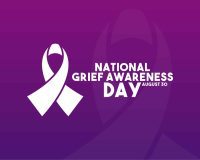The role of a patient’s primary care physician (PCP) does not always end when a patient is referred to palliative and hospice care. They are still typically reached out to for signatures and paperwork but their role could soon take on more of a significance as helpful guide and touchstone for patients and their families.
Medicare spending on hospice care has increased, but with it has come tighter regulations from the government, which will not only benefit better quality care for patients but will also help the public become better educated on how patients can receive regular medical care and take advantage of hospice-supported services. It is part of a 5-year pilot program called The Medicare Care Choices Program. Currently patients need to forego medical care in order to receive hospice services, and this program has been created to ascertain how many patients were willing to use hospice services if offered the chance (and having met hospice requirements) along with traditional medical care. If a patient chooses palliative and supportive care, they would still be able to seek traditional care from their providers.
The benefits of hospice care has been proven to help tremendously with patients in the last days of their lives, but what if they could be offered sooner? New Medicare regulations are allowing payment for longer hospice care, but how does a physician know the best time to refer a patient? The referring physician that suggests hospice is often not the primary care physician, but it is the primary care physician who, typically, has the best overview of the patient’s health that led to their current state.

Centers for Medicaid and Medicare Services (CMS) have also been increasing their audits of hospital claims for those who haven’t met the Medicare requirement. The upside to increased government involvement is that patients are getting more attention at a time in their lives they could use it the most and a key role can be played by the patients’ primary care physician. Referring physicians can see a patient’s health decline, but without meeting Medicare’s requirements the person can’t be in accepted into hospice. However, a PCP can shed light on a person’s decline.
It’s difficult to ascertain when a person will die from their disease, which is why more people are accepted into hospice when there are only a few days left. Any amount of time in hospice care is beneficial, so if the hospital declines hospice admission to a patient, that patient’s primary care physician may be able to work together with hospice and collaborate on the best practice for what is in the patient’s best interest.
Even when a PCP relinquishes involvement once a patient has moved to palliative and hospice care
a PCP’s continued involvement with a patient’s care can be very beneficial and so it’s important for PCPs to pick some hospice companies that they can build a relationship with and work with if their patients haven’t met the Medicare guidelines but would clearly benefit from hospice care.
Another recent change that’s been made, according to the Medicare Hospice Wage Index and Payment Rate Update for 2016, is the per-diem payment for routine hospice home care. It is now higher for the first 60 days and lower there after and an hourly service intensity add-on hourly payment was established for in-person home visits by hospice registered nurses and social workers to hospice patients during the last seven days of their lives.
Having the PCP remain in touch with patients and their families can offer solace and strength during a very difficult and often confusing time. It’s also an opportunity for the PCP to offer clear communication to the hospice company when patients may not be able to do so.
It can also provide an opportunity for conversation about end-of-life options with patients and their families when continued treatment is no longer a feasible option. It is important for PCPs to be aware of these changes Medicare and the government because though a doctor can see a patient who is steadily worsening but still doesn’t meet Medicare criteria, it is the PCP who can share critical historical knowledge of the patient and medical issues.
https://innovation.cms.gov/initiatives/Medicare-care-Choices/





2 Comments
You have brought up impressive details , thanks for the post.
new physician hiring San Antonio
This is great info. I am going to try abs print out for reference in the office.
Thanks